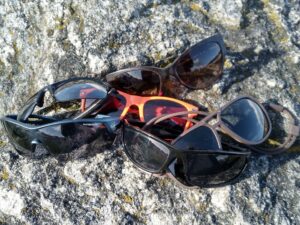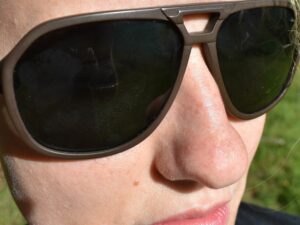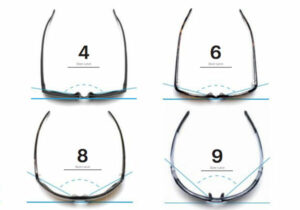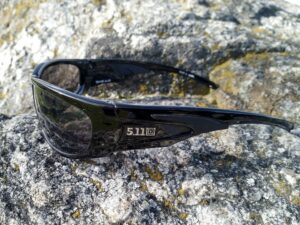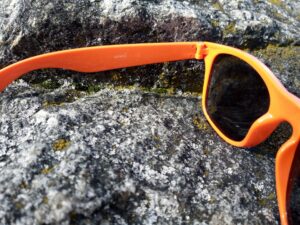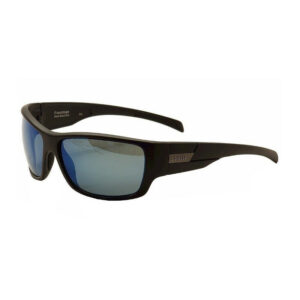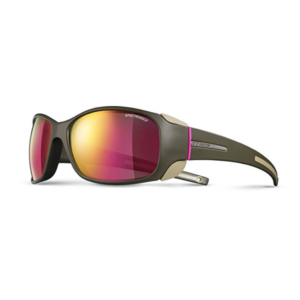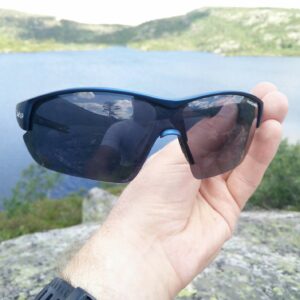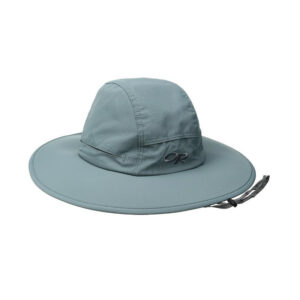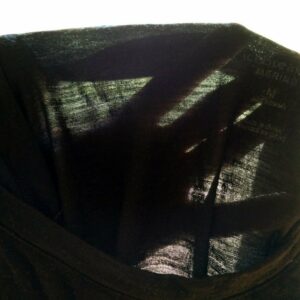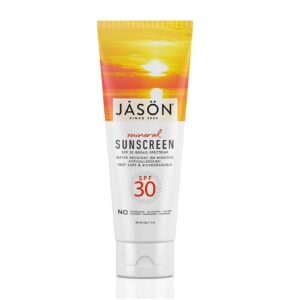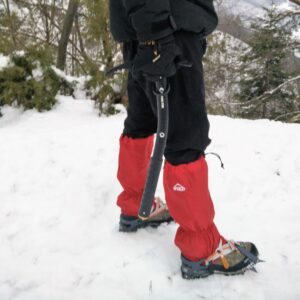Wearing sunglasses on a regular basis is crucial for the long-term health of your eyes, especially if you spend a lot of time outdoors in the sun. Not only can the ultraviolet (UV) radiation from the sun make your eyes feel tired and sore after a long day outside, but in the long-term too much exposure to the sun can contribute to serious eye issues.
In the following we will go over some of the most important factors when choosing sunglasses for hiking, mountaineering and other outdoor activities. Many place very big emphasis on the characteristics of the lens, and while this is very important for your viewing experience, it is hardly the only decisive factor when choosing sunglasses for hiking. The most important is that the sunglasses you choose protect your eyes from the sun from most angles and fulfill your individual needs for functionality. If you want suggestions for hiking sunglasses, you can look at our selections for men and women respectively (note that most, if not all pairs are unisex).
Things to consider:
Fit and Facial Features
The sunglasses you choose for hiking should fit your face in order to feel comfortable and protect your eyes in the best possible way. This may sound self-evident, but although most of us are equipped with two eyes, a nose and mouth, your face is unique with its very own set of characteristics and dimensions (unless you have an identical twin). Therefore, you should take a good look in the mirror before buying a pair of sunglasses for hiking, and ask yourself questions like: Is my face particularly narrow or wide? Are my eyes big or small? Deep-set or more protruding? Having answers to these questions will help you navigate easier through the jungle of various shapes. If you for example have a narrow petite face, very wide sunglasses are unlikely to fit you nicely and vice versa. If you have big protruding eyes, you might prefer a pair of sunglasses with bigger lenses than someone with small deep-set eyes.
Another facial feature to be mindful of is your nose – or rather your nose bridge. Most sunglasses are designed to rest on your nose bridge, which can pose a problem for those who have a low nose bridge or next to no nose bridge. This can especially be an issue for some people of Asian descent, although it can affect all ethnicities, which is why sunglasses which are designed to fit on a low nose bridge are designated as having an “Asian fit”. While the moniker might not be entirely unproblematic, the thought behind is ultimately to provide well-fitting sunglasses to people with a low nose bridge – regardless of ethnicity. Asian fit sunglasses usually have longer and larger nose pads than standard fit sunglasses to provide extra surface area and grip on a flatter nose bridge but can also be equipped with longer and more curved arms to grip better onto the temples and face. Two outdoor-oriented brands which offer various styles of Asian fit sunglasses are Maui Jim and Oakley.
Fit and Frame Shape
As mentioned above, the most important characteristic of the sunglasses you choose for hiking is that they protect your eyes and eye area from the sun from all angles. That means that no direct sunlight should ever reach your eyes, regardless of the sun being high or low, coming from the front, side or anything in between. In this aspect, you need to look at three things: The fit of the sunglasses on your unique facial features as described above, the base curve number of the frame of the sunglasses and the width of the sidearms around the temples. The base curve number tells us how curved the frame of the sunglasses is; the higher the number, the more curved the frame and the more the sunglasses wrap around your face.
The most curved sunglasses on the market are those with a base curve number 10, which is typically found in shield style sunglasses with a distinct military feel to them. Not all manufacturers disclose the base curve number of their sunglasses, but you can usually get an idea from looking at them from above and possible comparing to images of sunglasses with known base curve numbers. Most conventional sunglasses will have a base curve around 4-6, which sit flatter on your face and thus lets more sun in at the sides. This can, however, be mitigated if the sidearms of the sunglasses are quite wide but some sun light might still come in at the sides.
The bottom line? There is no question that a pair of well-fitting shield-style sunglasses with a base curve of 10 will protect your eyes much better than sunglasses with a base curve of 6. However, if you shy away from using a pair of shield-style sunglasses, because they don’t suit your personal style and taste, it is better to compromise on the functionality, and choose a pair that might let a bit of sun in at the sides at certain angles. The most important is that you actually do wear sunglasses for hiking and other outdoor activities when the sun is out and about.
Lens
UV-Protection
The most important feature of the lens of hiking sunglasses is that they block out ultraviolet (UV) radiation from the sun in order to keep your sight undiminished and unharmed for as long as possible. Short-term, your eyes might just feel tired and over-sensitive after overexposure to direct sunlight, but long-term UV-radiation is a contributing factor in the development of eye illnesses like cataracts (can lead to blindness), macular degeneration and eye-surface problems like pterygia and pingueculae. Sunglasses for hiking should protect against 99 -100% of UV radiation, and labelled as such. They can also be labelled “UV400” or “UV absorption up to 400nm” – which effectively means that they block out 100% of UV radiation. Unfortunately you can’t judge the level of UV protection on the color or darkness of the lens; you have to rely on the information from the manufacturer.
Visible Light Transmission (VLT)
The next thing to look at is how much visible light the lens transmits to the eye. There are five VLT (Visible Light Transmission) categories for sunglasses. Sunglasses in categories 0-1 are for fashion use rather than sun protection as they allow more than 50% of the visible light to enter your eye, and thus unsuitable for hiking and other outdoor activities. For general hiking you should at least aim for category 2 sunglasses (which transmit between 18 % and 45 % of the visible light), and category 3 sunglasses (8-18% VLT) for hiking and mountaineering in open mountain ranges. Category 4 sunglasses (which transmit less than 8% of the visible light) are meant for the brightest conditions imaginable like glacier walking or high-altitude mountaineering and are prohibited to use while driving. Some sunglasses have photochromic lenses which means that the lens adjust itself according to the amount of incoming visible light, so it darkens in bright sunny conditions and lightens in cloudy or foggy weather.
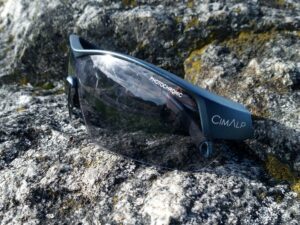
How to choose sunglasses for hiking -Photochromic lenses will darken or brighten depending on the light conditions
Other Features, Coatings and Color
Besides photochromic lenses, which change their VLT category depending on the conditions, many look for polarized lenses when searching for sunglasses for hiking. Polarized lenses are treated so they filter out the intense glare which appears when the sun light reflects off a smooth shiny surface, like bodies of water or snow-covered terrain. This can make the viewing experience more pleasant in such environments. Lenses can also be treated with coatings etc. to make them more scratch-resistant, water-repellent, smudge-resistant and/or less likely to fog while hiking or other aerobic activities outside. The tint of the lens does not affect the protection level, but rather how you see your surroundings. The rule of thumb is that grey lenses give the most natural rendering of the colors around you while brownish lenses increase contrast – it is up to you what you prefer for hiking. Darker colors do, however, help to minimize the glare and reduce eyestrain in bright conditions.
Prescription
If you wear prescription glasses or contacts, you might want to have prescription lenses in your sunglasses as well. Quite some top-notch brands offer prescription solutions, such as Julbo, Oakley and Smith Optics. It varies from brand to brand which styles are available as prescription sunglasses –Maui Jim and Oakley for example offers as many as 95 % and 87% respectively of their sunglasses in a prescription version, while the more affordable Tifosi only offers a handful of styles. In the US, SportRX is known for being the ultimate provider of prescription performance sunglasses. Be aware that your prescription influences how much choice you have with regards to the shape and base curve of the frame of the sunglasses. If you have a high prescription, you might have to go with a flatter pair of frames (and ditto lenses), since the curve of the lens can distort the vision if not in accordance with the prescription.
Quality
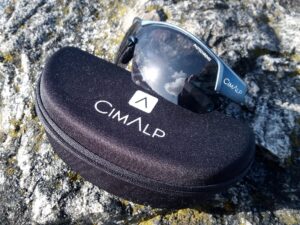
How to choose sunglasses for hiking- A pair of high-quality sunglasses cared for and stored appropriately can last many many years
Some people think that cheap sunglasses don’t protect their eyes sufficiently, which is a falsehood – as long as the lenses are marked 100 % UV protection or 400 nm, the eye is as such protected by the lens itself. Another matter is how well they fit you, and how long a pair of cheap sunglasses will last in the great outdoors. Not only are the materials usually low-quality, meaning that the frame might break and that the lenses are easily scratched, but there is a good chance that you yourself will appreciate and take better care of a pair of high-quality sunglasses than something from the dollar store. Besides being made of more durable materials, high-quality sunglasses will also be more comfortable to wear as there is money and knowledge behind the design. In terms of sustainability and making sure that your environmental footprint is as small as possible, it also makes sense to buy something which you will wear and treasure for as long as possible.
